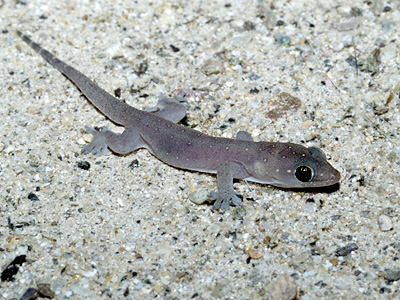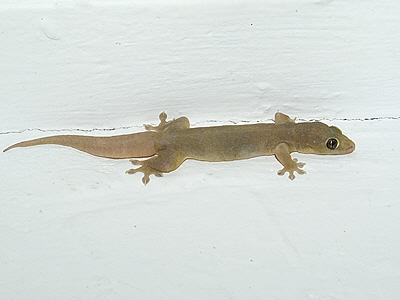
Fig 1

Fig 2

Fig 3

Fig 4

Fig 5
|
Family : GEKKONIDAE
Species : Gehyra mutilata
Size (snout to vent) : 6 cm
Size (total length) : 12 cm
The Four-clawed Gecko is a common species which
thrives in various habitats, including forests and urban areas. Its vernacular name
derives from the absence or near-absence of a claw on the inner digit of its fore and hind
feet. The other toes and fingers are equipped with well-developed, curved
claws.
The finely granular skin may be somewhat translucent, so it appears pinkish
or purplish in colour : juveniles may have minute pale spots on the head and
neck. The relatively thick tail is oval in cross-section and has an absence
of spines. The head is relatively large.
The species is to be found
throughout Southeast Asia including Myanmar, Thailand, Indochina, Malaysia,
Singapore and most of Indonesia. Its range extends across the Pacific to
Hawaii and Mexico.
Fig 1 : Recent hatchling with pale yellowish spots, and brown
background, Singapore.
Fig 2 : Purplish juvenile with pale spots, Singapore.
Fig 3 :
Strongly patterned adult, central Cambodia.
Fig 4 : Typical pale brown specimen, with faint pale spots, Singapore.
Fig 5 : Specimen from Lombok, Indonesia. The two bulges either side of
the neck are calcium sacs - these minerals are set aside for eggshell
production.
References :
Cox, van Dijk, Nabhitabhata, Thirakhupt, 1998. A photographic Guide to
Snakes and Other Reptiles of Peninsular Malaysia, Singapore and
Thailand. New Holland.
|